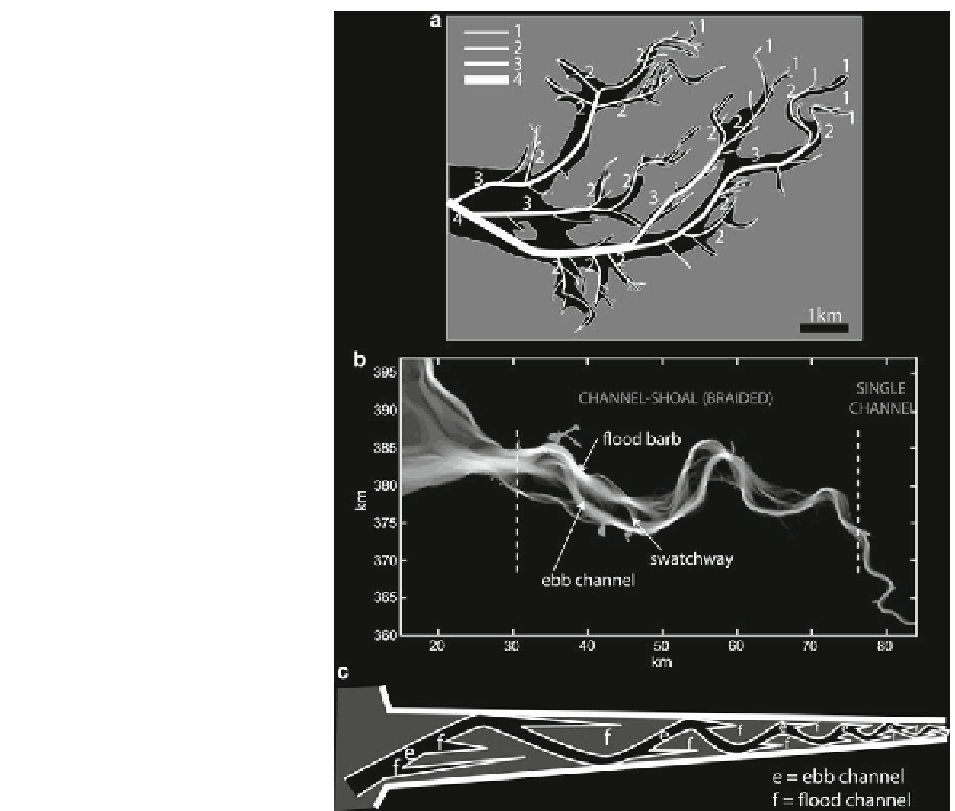Geology Reference
In-Depth Information
Fig. 11.1
Types of tidal
channels: (
a
) a dendritic or
fractal network in the Dutch
Wadden Sea, stream orders
are numbered (Cleveringa
and Oost
1999
) ; (
b
) braided/
interconnected channeling in
the Western Scheldt Estuary,
Netherlands; and (
c
) a sketch
of ebb and fl ood channels in a
braided network (van Veen
(
1950
) ; adapted from Hibma
et al. (
2004a
) )
gradients; and (4) width to depth ratios greater than 5
(Steers
1969
; D'Alpaos et al.
2005
) . In general, the
channels tend to narrow inland; seen from above,
coastal waterways often appear funnel-shaped. This
relates to a reduction in tidal prism upstream (the rate
of this reduction is sometimes explained by tidal reso-
nance; for further discussion see Wright et al. (
1973
)
and Van der Wegen et al. (
2008
) ). This strong spatial
gradient of channel width, which occurs in shallow
tidal channels of all orders, is arguably one of the key
characteristics that distinguishes tidal from fl uvial sys-
tems, along with the notably higher width of tidal
channels with respect to the inter-channel region that
they 'drain' (Fagherazzi et al.
1999
) . This difference in
channel width to drainage area means that tidal chan-
nels would seem more closely spaced when compared
to rivers of a similar width.
Tidal channels are ubiquitous, occurring across
macro-, meso- and microtidal environments. They
often form dendritic networks (i.e. branching and blind
ended; Ashley and Zeff
1988
) , commonly of low-
order. The smallest creeks at the edge of a network are
the lowest order, these meet to form a channel of the
next order (Fig.
11.1a
, Horton
1945
) . Tidal channel
networks have been described by some studies as
fractal (Perillo et al.
1996
; Fagherazzi et al.
1999
;
Schwimmer
2008
) . Pestrong (
1965
) observed that the
dendritic tidal networks in San Francisco Bay resem-
bled fl uvial systems. However, despite their apparent
similarity, he determined that the tidal channels did not
follow Hortonian laws of drainage networks. Tidal net-
works, unlike their fl uvial counterparts, are not true
scaling structures (Fagherazzi et al.
1999
) . Marani
et al. (
2002
) concluded that “in any real case of fl uvial

